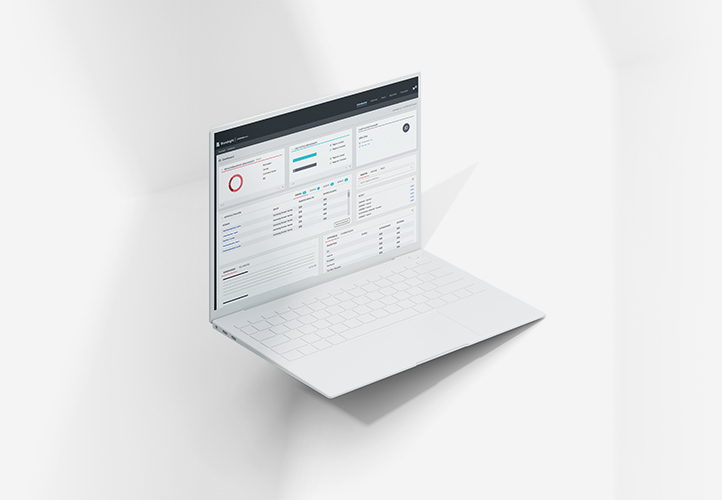Jan 11, 2022 - by Staff Writer
In Conversation with Rob Ward, Senior Client Success Manager at GoDaddy Corporate Domains (GCD)
Rob Ward is a Senior Client Success Manager at GoDaddy Corporate Domains (GCD). In his role, Rob manages domain portfolios for corporate clients. His work entails a variety of projects including domain registrations and transfers, name server updates, and managing DNS records. Rob also acts as a consultant to advise clients on best practices for managing their domain portfolio including how to forecast budgets as portfolios expand.
Below is an interview with Rob and Matt Serlin, Head of Client Success and Operations in which Rob shares his insights on emerging trends and challenges, how Covid affected domains, security concerns and innovations to meet client needs.
Matt: What is one of the most frequent client requests you address at GCD?
Rob: Customers often have accumulated domains over the years, and they need to trim their portfolio and cut their budgets. In the past, companies kept buying up domain names, but these days, they are trying to maintain a right-sized portfolio that is not bloated with a bunch of obsolete or unnecessary domains.
GCD’s strategy is to do a portfolio optimization with the client. We create a report that shows them a top tier of priority domains down to a bottom tier of lesser priority. The report takes many factors into account such as how popular the extension is, which domains might get squatted if discarded, which sites are being redirected, and which sites are inactive. From there, clients can see which domains to keep and which to mark for lapse.
For example, a client had about 25,000 domain names in their portfolio. They really needed a roadmap and a plan. Their portfolio covered a few old, now-defunct business units, so they were able to let all those domains go because they didn’t have – or need - the trademarks anymore. With clients, we typically make a recommendation and then the ball is in their court for their legal team to review.
Matt: Did you see any changes in the domain business due to Covid, and the transition to work from home?
Rob: Back in March 2020, the initial challenge was getting people set up to work remotely, whether it meant getting them computers, monitors, or setting up the VPN. After their employees were set up to work, they wanted to protect their domains and prevent squatters and speculators from registering domains and trying to either sell them back to the client or to others.
From a security standpoint, we did see an abundance of Covid-related domain scams that were impersonating government agencies offering stimulus services and Covid-related sites with health care information. Many of these were phishing scams to capture people’s personal data. It’s unfortunate that a pandemic paved the way for bad actors to leverage domains for malicious activity, but thankfully a lot of this nefarious activity has died down.
Matt: What do you think the greatest challenges are with domains for a company launching a new brand?
Rob: Companies launching a new brand have tremendous challenges as they decide what they want to protect and are creating a list of countries where they want to register. There are no universal rules for how to do this best. It’s determined client by client and business by business, depending on the business type and location. A global business will probably register a lot more ccTLDs (country-code top-level domains) because they operate in more markets. Businesses that are more regional or country-specific can pick and choose the areas where they want to focus. Companies can spend a lot of money on each mark or brand and registering them across the world can be very expensive. GCD is often brought in to assist companies who are going through this difficult process. GCD helps clients rank the TLDs by highlighting the most trafficked ones and understanding where they want to spend their money. That ranking often illuminates a path to what will work best for them.
If the company does not have a strategy of selecting domains based on their priorities, they could be throwing money by registering domains anywhere and everywhere. This approach leads to bloated portfolios that are filled with stale domains that cost money to maintain but have no benefit for the organization. Clients leverage GCD to help them devise a registration strategy which ensures the domain portfolio will accurately reflect their domain needs and their budgetary guidelines.
Matt Serlin: Why do people transfer their domains to GCD?
Rob: Certain registrars charge clients for every little service, and that’s where GCD is different. We don’t charge for automated name server updates, contact changes or ownership changes. Clients also like our billing approach because they get a monthly bill from us and don’t have to pay with a credit card. When clients’ portfolios get bigger, they outgrow their registrars and need different services added that their registrar doesn’t have. GCD can accommodate their greater needs, so the client transfers their domains to us. Also, many clients come to us for unique services like registry locking where clients can put an extra lock on very high-value domains so that no one can update any information on those domains without authorization. Clients like that level of security.
Matt: Have there been any new developments in GCD’s technology or service offerings to meet client demands?
Rob: One great tradition we have at GCD is our quarterly roundtable discussion with clients. We want to know what more they want from GCD’s Brandsight technology platform. As we get feedback from clients, we add new functionality directly to Brandsight, such as SSO (single sign-on) which was recently added. Our mission is to make it easier for clients to work with our people and technology resources, so we’re constantly adding new features and services. At GCD, we are always upgrading and innovating – commitment to excellent client service is in our DNA.
